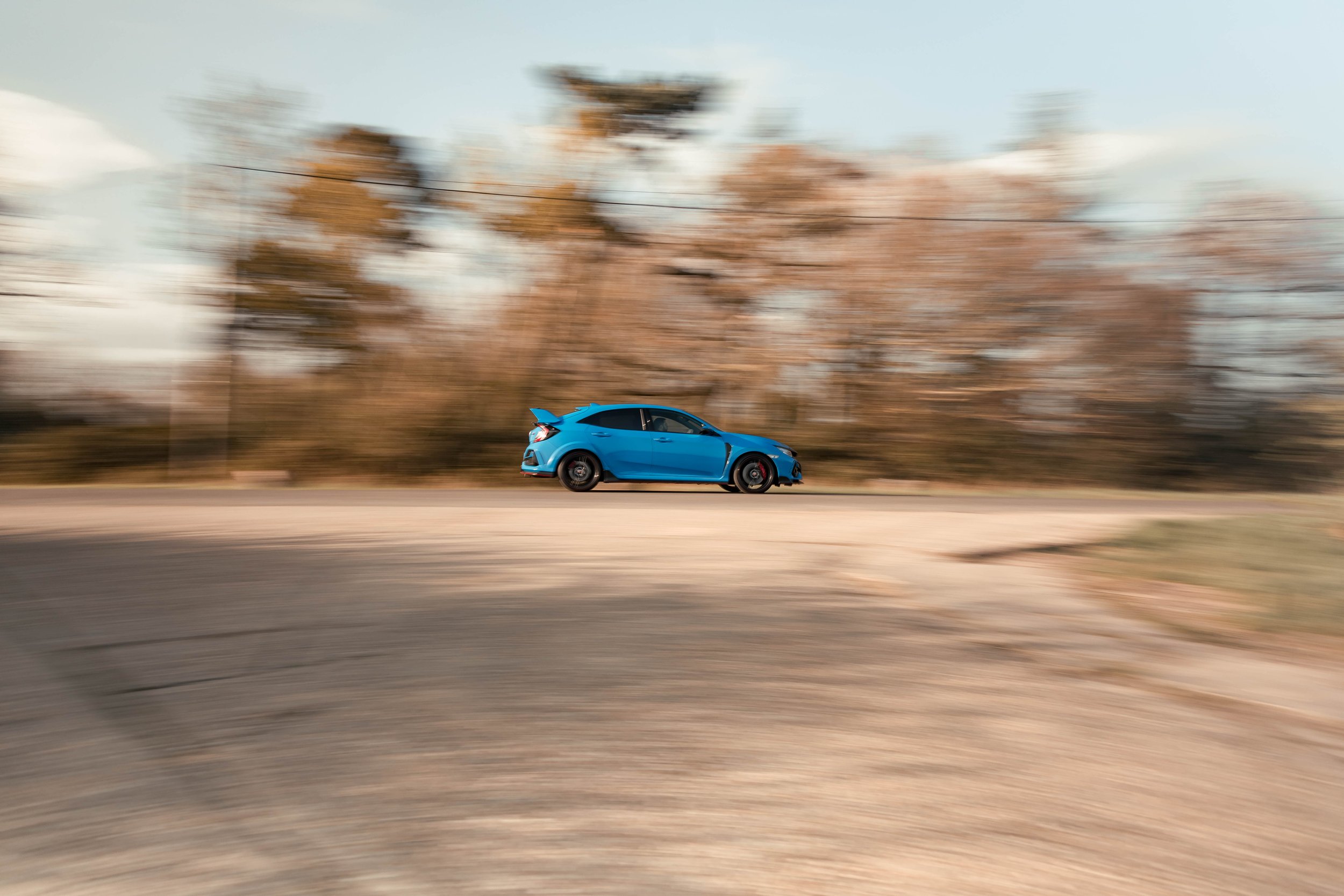
Road Test: FK8 Honda Civic Type R
The age-old saying “if ain’t broke, don’t fix it” hasn’t stopped Honda from updating the FK8 Type R. Have they improved it?
WORDS: Mark Rose | PHOTOS: Harry Hartland
The FK8 Honda Civic Type R is a car I know very well after spending three months with it in 2020. Later that year, Honda refreshed the model by adding some subtle styling tweaks – not that there’s anything subtle about the way the Type R looks – and some changes to the way it drives. The FK8 was hardly in need of an update to begin with. It offered everything you want from a hot hatchback: power to the front wheels, limited slip differential, six-speed manual gearbox, an engine with upwards of 300bhp, the list goes on. As a driver’s car, it was as brilliant as fast family hatches get, so messing with the recipe runs the risk of undoing Honda’s great work.
One area that remains untouched is the engine. It still packs the same turbocharged 2.0 litre 4-cylinder VTEC motor. The outputs of 316bhp and 295lb ft remain unchanged as does the zero to 62mph time of 5.7 seconds and the 169mph top speed. As a result, it performs just as it did before with turbo boost at 3,000 rpm and VTEC from 6,000rpm which allows the engine to pull all the way to the limiter at 7,000rpm. Something it never needed was more power, especially when you consider it’s front-wheel drive, but also because it felt like the correct amount of performance for the package. You can still get on the power early as you whip round corners, using the magic of the limited slip-diff to pull you round and slingshot you down the road. The front-end adjustability of the FK8 is its greatest asset and helps separate it from its all-wheel drive competition.
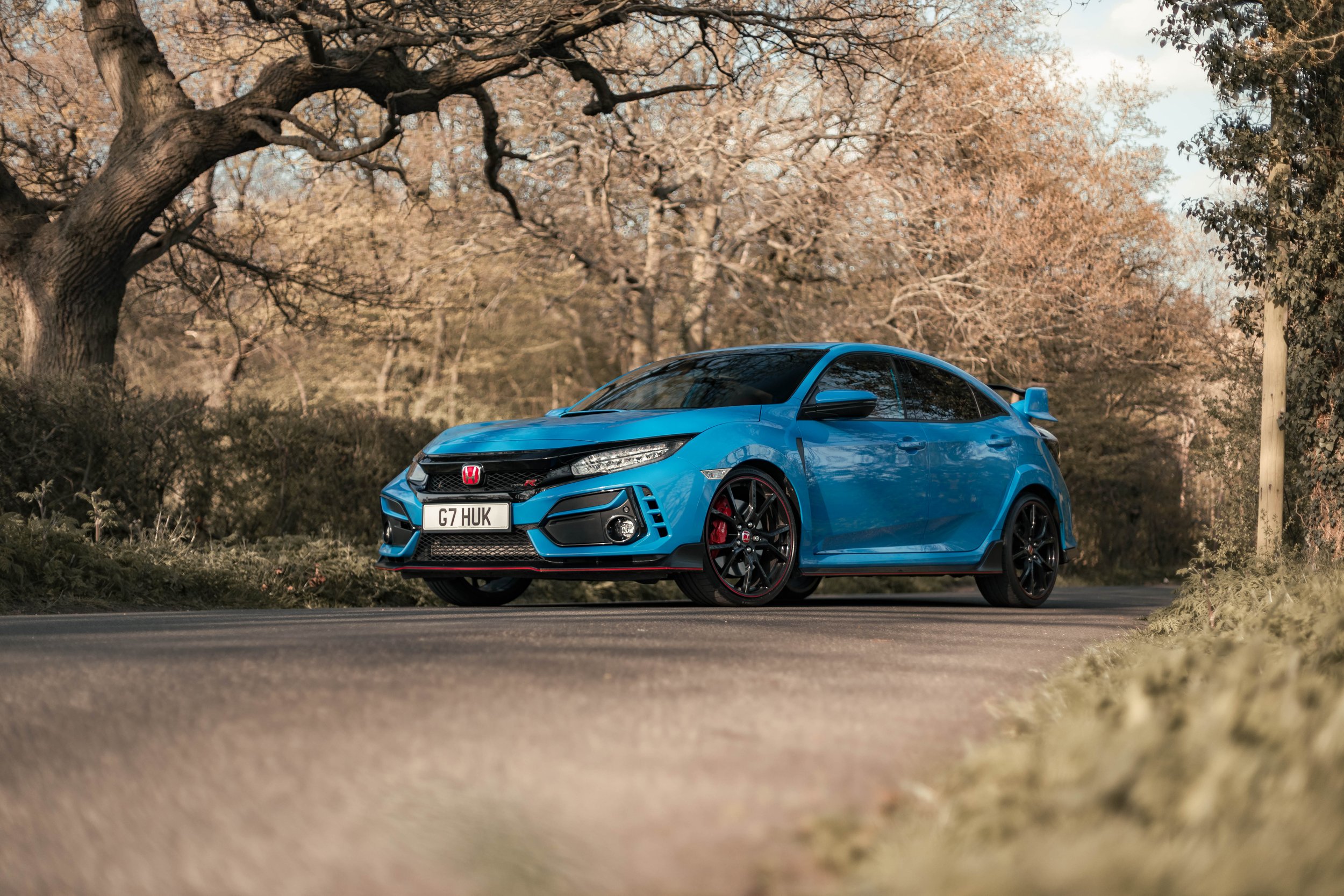
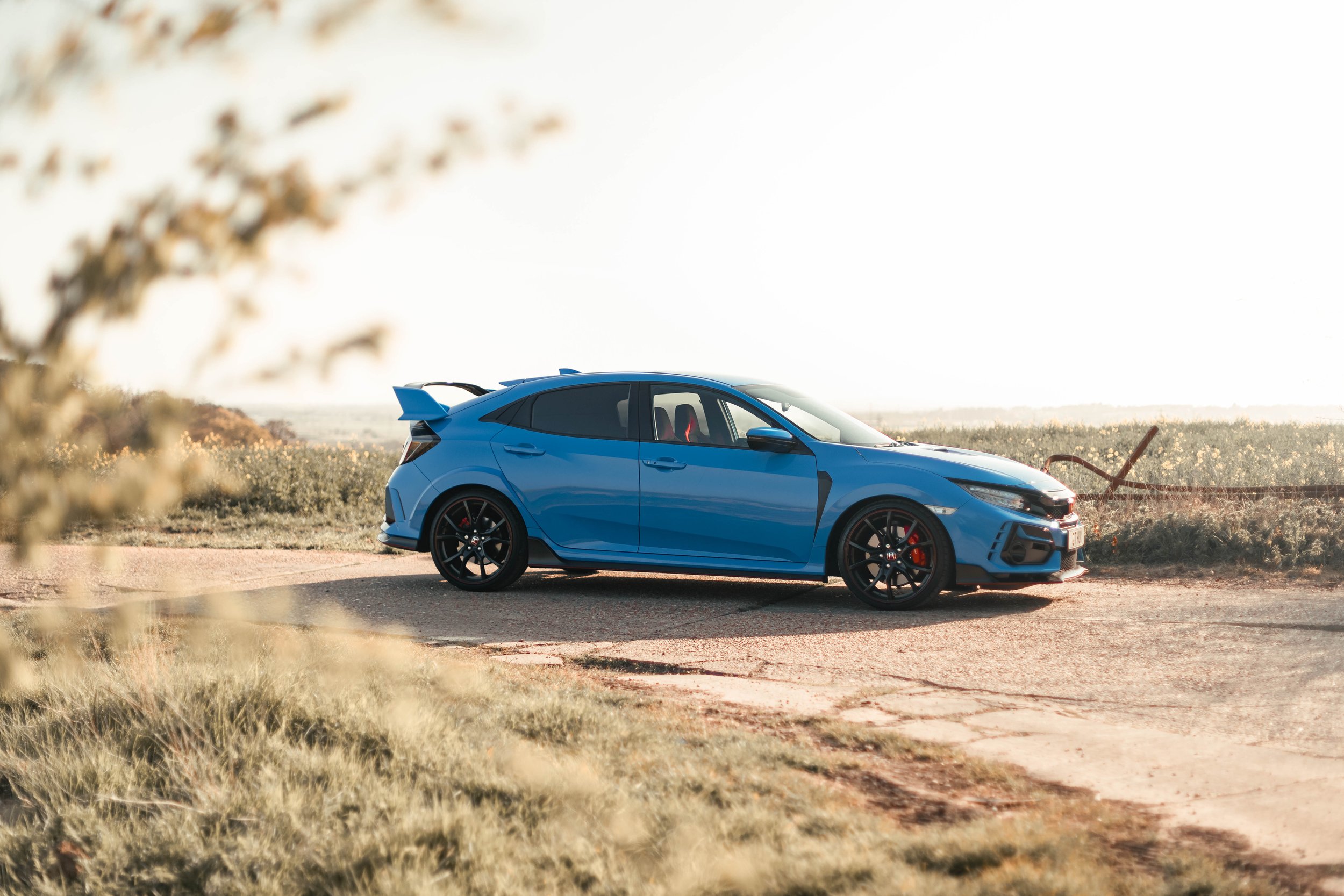
Instead, Honda has got to work on widening the differences between the driving modes. It still has comfort, sport and +R, but the racier mode now feels like a track-only set up when before you could get away with using it on the public road. A drive along one of our regular test routes exposed how much firmer the refreshed Type R is. It’s always been taut, but stiffening it further has taken away some of the compliance and I found myself having to back off on certain roads where previously I had the confidence to carry the speed. Instead of settling after encountering a large bump, it was deflected off-line and then momentarily struggled to regain its composure. I also don’t like the extra sound being pumped in to the cabin in the +R mode. It’s a bit contrived when you consider a Type R is the purist’s choice in the hot hatch market.
The sport setting once again represents something of a sweet spot for road use with its heightened responsiveness, sharpened dynamics and increased steering weight. The steering calibration has also had a going over. It’s now weightier than before and requires a little more effort to turn. It’s one of those things that you quickly get used to but is something that never needed improving in the first place. The brake pedal still feels strong and progressive, and overall, the revisions have made for a car that turns in a little keener than it did before.

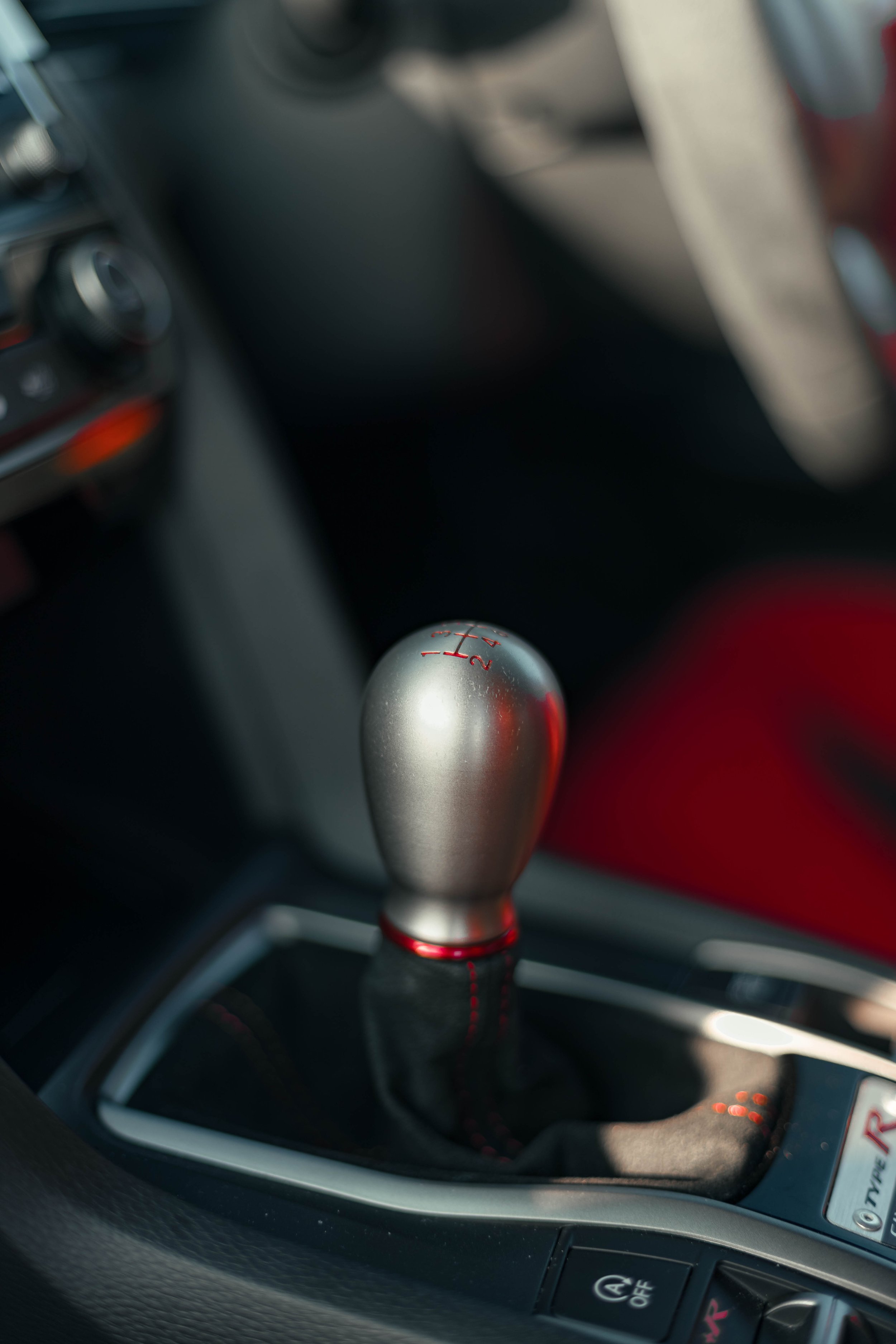
Understeer and Type R have never been words you could reasonably include in the same sentence, and this refreshed model takes it another step on. The great news is, when you just want to use the Civic as a daily driver, comfort mode slackens off the suspension and increases refinement. Apart from the usual running expenses, a Type R is just as useable as a normal Civic with plenty of space for five people and a truly cavernous boot.
Some revisions have also been made to the cabin. The steering wheel is now trimmed in Alcantara – thumbs up for that – the infotainment screen has been given some much-needed physical buttons, and the metal gear knob has been changed from the ball shape in the previous car to a teardrop for full-on EP3 vibes. I know this is subjective, but I personally prefer the old ball-style gear knob. I know there’s a nostalgic element to the teardrop and I’m sure Honda can justify it from an ergonomic point of view, but I loved the way the old one sat perfectly in the palm of my hand, and the new item just doesn’t give me that same satisfaction. Something that can never be denied is the quality of the shift though. It’s become a Type R hallmark with its rifle-bolt action and short throw, and is by far one of the best manual gearboxes in any car, perhaps even the best. The rest of the cabin is the same as before. The fit and finish is excellent, the infotainment system less so. The materials for the main touch points are deliberately inspiring, and the Recaro bucket seats and driving position continue to delight.
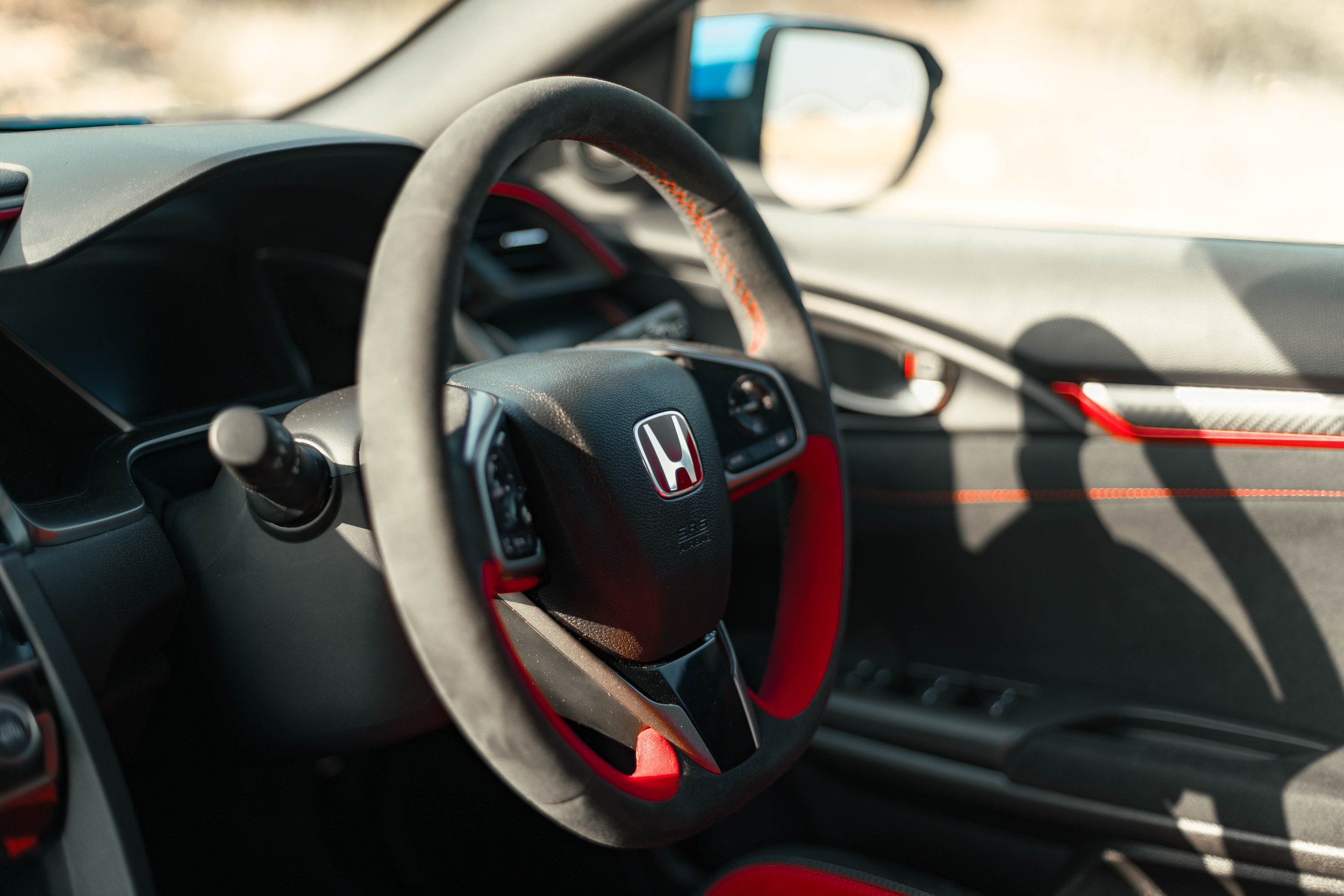
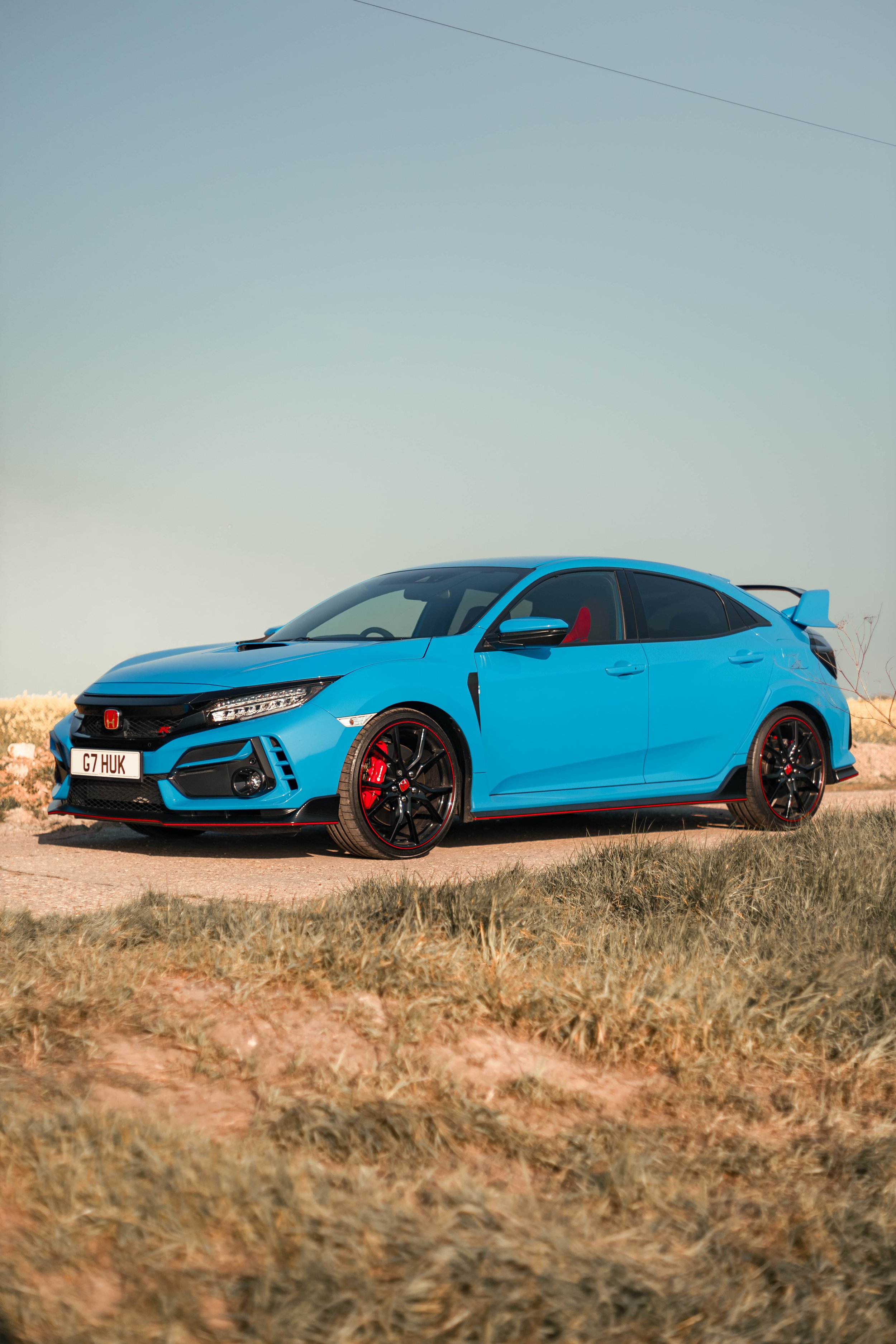
The Type R range has changed slightly. Prices start from £34,415 and you pay an additional £2,000 for the GT-spec car which comes with most of the available optional extras included. However, if you want the Type R experience without the giant rear wing and some less aggressive road tyres, you can now purchase a Sport Line model which starts from £35,400. Honda also made 1,020 track-spec Limited Edition variants, only 20 of which have come to the UK. Needless to say, they’re all sold, but we should be getting our hands on one later in the year.
Honda could have easily made some minor visual tweaks, introduced the new model variants and left it at that. However, the FK8 is a car that’s been put out by an engineering team not a marketing department and so the urge to fettle with it was all too much for them. Objectively, they’ve improved it. It could still benefit from some individually adjustable suspension, particularly now that +R mode is off-limits unless you’re on a track, but fundamentally it is still the driver’s choice in the hot hatch market and the one that gets my recommendation.
Engine: 4-clinder, turbo, VTEC
Displacement: 1,995cc
Power: 316bhp @ 6,000rpm
Torque: 295lb ft @ 3,000rpm
Transmission: 6-speed manual, FWD
0-62mph: 5.7 secs
VMAX: 169mph
Kerbweight: 1,397kg
Price: £34,415 (when new)
Technical Specifications
9/10
Rating
“The revisions have made for a car that turns in a little keener.”

